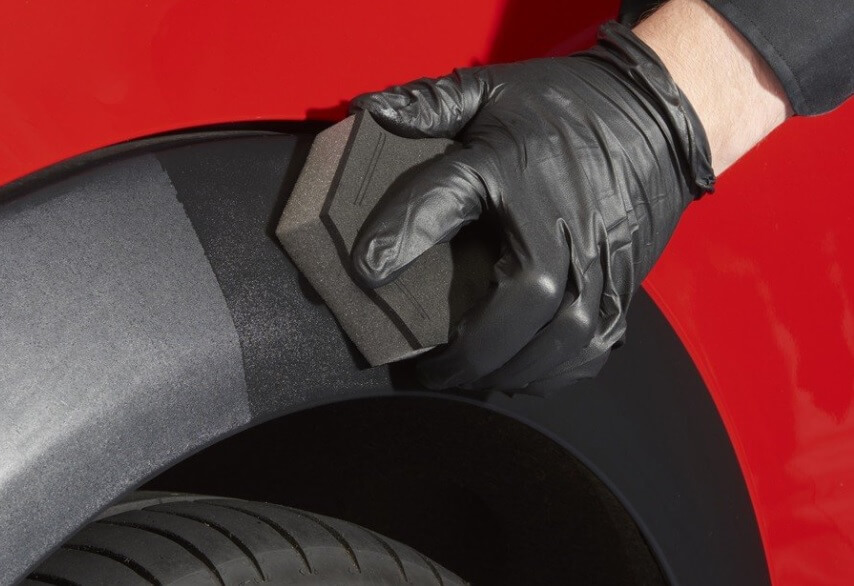This post may contain affiliate links. We may earn a small commission from purchases made through them, at no additional cost to you. You help to support resin-expert.com
There is always a chance of spilling a little paint when working around the house. Maybe you have done the best you can to cover areas, but you still somehow manage to find paint splatter on surfaces when you are finished. Removing paint from metal and most other surfaces is easy; you simply wipe it off with a solvent. Removing paint from plastic, on the other hand, can be a little more difficult as solvents can damage the surface. Thankfully, when it comes to how to remove paint from plastic, there are a few safer methods.
Table of Contents
At home or work, if you look around, you are bound to find numerous plastic items and products.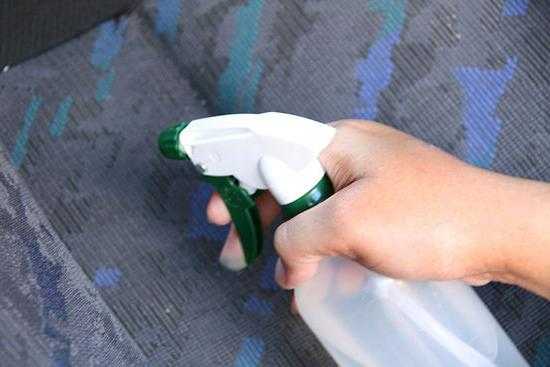 Plastic has become an extremely common material that comes in different forms. There are several primary forms of plastic as follows:
Plastic has become an extremely common material that comes in different forms. There are several primary forms of plastic as follows:
As you can see, plastic is quite a broad term as there are many different types of plastics available today. The type of plastic can also play a role in removing paint from plastic as some are harder and more durable than others. So, what are the possible cases where removing paint from plastic is necessary?
The type of plastic can also play a role in removing paint from plastic as some are harder and more durable than others. So, what are the possible cases where removing paint from plastic is necessary?
When trying to strip paint from plastic, using a solvent may just damage the item you want to clean. The easiest and safest method to try first is simple, use a rag and some soapy water. Rub the area until the paint comes off and wash clean with a wet cloth. You can also soak plastic items if possible. This is most effective when done immediately and the paint has not dried yet.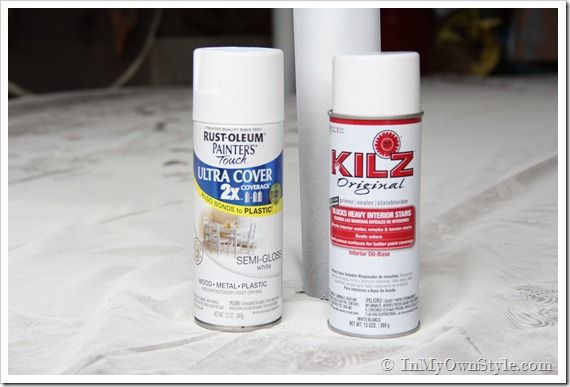 However, if the paint remains, you can move on to something else. Below are more methods on how to remove paint from plastic.
However, if the paint remains, you can move on to something else. Below are more methods on how to remove paint from plastic.
Another easy method to help you strip paint from plastic is by gently scraping it off using a paint scraper. This method works best on smooth plastic, but whatever the case, be careful to not be too aggressive or you could damage the surface. Instead of a paint scraper, you could also try a blade, screwdriver, or putty knife. Make sure the scraper is at an angle to scrape the paint.
If the paint remains, consider wiping the area with a little warm soapy water, or a little rubbing alcohol, and then try scraping again.
As mentioned, some rubbing alcohol can also help. In this case, apply some of the rubbing alcohol to the paint only and then cover it with some plastic wrap. Wait for 30 minutes before taking the plastic wrap away, then wipe the paint off. This procedure might have to be done two or three times to make sure all the paint is gone. When wiping away the paint, use a cloth as a brush or other abrasive material that can damage the plastic surface. Also, it is a good idea to test out a small unobtrusive area first to see if the rubbing alcohol has any negative effect on the plastic. You also might consider wearing a mask and using some gloves for protection.
This procedure might have to be done two or three times to make sure all the paint is gone. When wiping away the paint, use a cloth as a brush or other abrasive material that can damage the plastic surface. Also, it is a good idea to test out a small unobtrusive area first to see if the rubbing alcohol has any negative effect on the plastic. You also might consider wearing a mask and using some gloves for protection.
Another method for how to remove spray paint from plastic with household items is vegetable oil. Everybody has this in their homes, and it is safe and easy to use for removing paint from plastic. Place a clean cloth into the vegetable oil and rub where the paint has spilled. Here you can apply with a lot more energy until you can see the paint coming off.
How to remove spray paint from plastic with household items? We all most likely have vinegar in the kitchen, so why not use it for removing paint from plastic.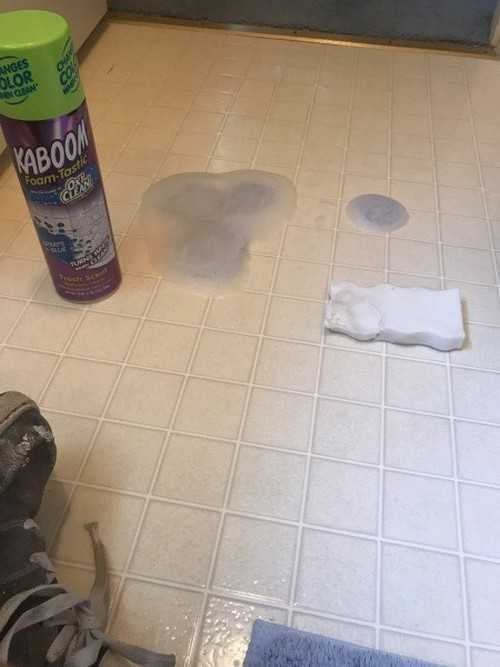 However, there are certain things you must take into account, including the type of paint on the plastic surface. Vinegar will remove latex paint most effectively. All you have to do is heat some distilled vinegar in the microwave on high. Leave it in for one minute and it should then be quite warm but not too hot. Dip a sponge into the warm vinegar and rub the area where the paint is on the plastic surface.
However, there are certain things you must take into account, including the type of paint on the plastic surface. Vinegar will remove latex paint most effectively. All you have to do is heat some distilled vinegar in the microwave on high. Leave it in for one minute and it should then be quite warm but not too hot. Dip a sponge into the warm vinegar and rub the area where the paint is on the plastic surface.
You might need something stronger than vegetable oil when it comes to how to remove enamel paint from plastic, which is where acetone comes in. You can use nail polish, however, if the plastic is colored, a regular acetone-based product will work better. Apply directly to the paint, wait five minutes, and then wipe off with a cloth.
Any solvent gives off toxic fumes, so working in a well-ventilated area is advisable.
You can also consider denatured alcohol, which is stronger, however, you must be careful when using it. Dip a rag into the alcohol and apply only a small amount directly to the paint. Wait five minutes to make sure it is not affecting the paint. Only apply once as the plastic surface will be damaged if too much is used. If you notice the paint is dissolving, you can then scrape the paint off. Once the paint has been removed, there might be a few spots left. Simply wipe the surface with a cloth dipped in some warm soapy water and then leave the surface to dry thoroughly. This method is best used on harder plastics like a bucket and only works to take off latex paint.
Dip a rag into the alcohol and apply only a small amount directly to the paint. Wait five minutes to make sure it is not affecting the paint. Only apply once as the plastic surface will be damaged if too much is used. If you notice the paint is dissolving, you can then scrape the paint off. Once the paint has been removed, there might be a few spots left. Simply wipe the surface with a cloth dipped in some warm soapy water and then leave the surface to dry thoroughly. This method is best used on harder plastics like a bucket and only works to take off latex paint.
You can also use ammonia, which works more on acrylic and latex paints. Mineral spirits will work better on oil-based paints. Solvents should always be tested out first in an unobtrusive area. The different plastic will react differently, so take a Q-tip and place a drop on the plastic surface, and wait to see what happens. If you do not notice any difference, it should be okay to use the solvents.
As you can see, there are several effective methods for removing paint from plastic surfaces. Here is a brief summary of these different methods.
Here is a brief summary of these different methods.
| Removing Paint From Plastic-Methods | Effective | Safe to use | Use Caution |
| Paint Scraper | ✔ | ✔ | ✔ |
| Rubbing Alcohol | ✔ | ✘ | ✔ |
| Distilled Vinegar | ✔ | ✔ | ✘ |
| Vegetable oil | ✔ (oil-based paint) | ✔ | ✘ |
| Acetone | ✔ | ✘ | ✔ |
| Solvents (Denatured alcohol, thinners) | ✔ | ✘ | ✔ |
There is also some paint remover for plastic products on the market that are effective and safe to use on a variety of surfaces including plastic.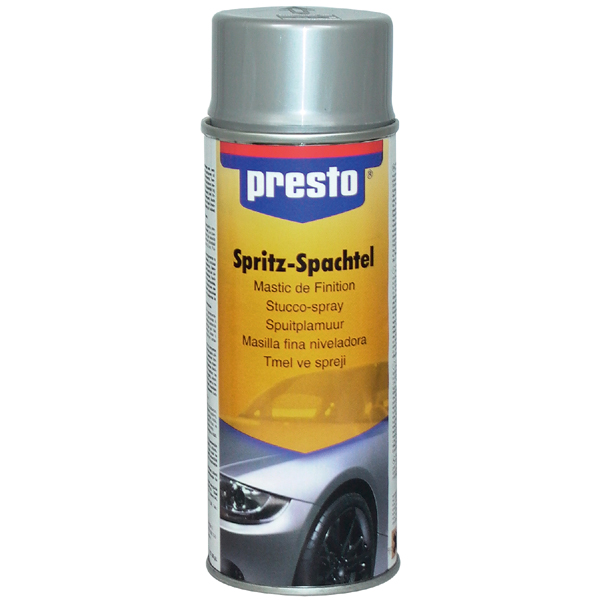 These products can also be used for a variety of other purposes around the house, making them versatile and worth what you pay for them.
These products can also be used for a variety of other purposes around the house, making them versatile and worth what you pay for them.
If you are looking for a product specialized product for removing paint, then you do not need to look any further than this fantastic product. The water-based formula allows you to safely and easily remove all kinds of paint from a range of surfaces, including metal, plastic, concrete, fiberglass, and more. This product is eco-friendly and safe for the user.
MOTSENBOCKER's Lift Off
View on Amazon
PROS
CONS
If you only need to clean up a small amount of spilled paint and you do not want to buy a whole new product, this all-in-one domestic cleaner is a great option. Once you have removed the spilled paint, you can use these cleaning pads to clean up any other sources of dirt in your home. This product is perfect for cleaning doors, bathtubs, oven doors, and even light switches. There are no harsh chemicals in this product, and you can either re-fill the product once it runs out or recycle the bottle.
Once you have removed the spilled paint, you can use these cleaning pads to clean up any other sources of dirt in your home. This product is perfect for cleaning doors, bathtubs, oven doors, and even light switches. There are no harsh chemicals in this product, and you can either re-fill the product once it runs out or recycle the bottle.
MR CLEAN Magic Eraser
View on Amazon
PROS
CONS
This product works the first time every time to remove a variety of tough stains like paint on plastic.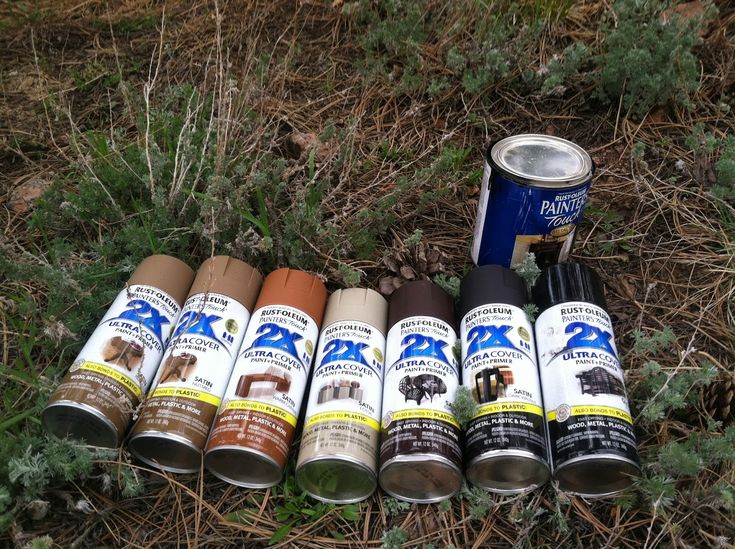 If you have tried many products and they have not worked, then you definitely need to try this product. You can safely use this paint stripper for plastic, clothing, glass, and a variety of other surfaces. This paint remover for plastic is easy to use, simply apply it to the stain and leave it to penetrate for at least a minute. You can then use an absorbent cloth to wipe it off.
If you have tried many products and they have not worked, then you definitely need to try this product. You can safely use this paint stripper for plastic, clothing, glass, and a variety of other surfaces. This paint remover for plastic is easy to use, simply apply it to the stain and leave it to penetrate for at least a minute. You can then use an absorbent cloth to wipe it off.
GOOF OFF Household Heavy Duty Remover
View on Amazon
PROS
CONS
Plastic models and painting them is a popular hobby and at some point, a paint stripper for plastic will be necessary. Maybe a mistake was made, or you could simply want to apply a fresh coat of paint, either way, the old paint needs to be removed. Plastic models can either be painted with enamel or acrylic paints and these can be removed by using a commercial paint remover you get at a model store. You could also try out other products like Easy Off, Simple Green, Purple Power cleaner, or SuperClean.
Maybe a mistake was made, or you could simply want to apply a fresh coat of paint, either way, the old paint needs to be removed. Plastic models can either be painted with enamel or acrylic paints and these can be removed by using a commercial paint remover you get at a model store. You could also try out other products like Easy Off, Simple Green, Purple Power cleaner, or SuperClean.
There are other options available as well, and these methods use materials that might be lying around the house. One cheap and easy method is to use Dettol or some other antiseptic product. This will work best on acrylic paints. Follow the process below for removing paint from plastic models.
Any plastic model or item that soaks in the Dettol will loosen any glue there is.
However, this is a good thing if you want to adjust any mistakes. You should just be aware that the glue will break down.
Another household item that can be used to remove paint from plastic is oven cleaner. You can spray the model and place it into a sealed bag. Leave this for a day or two and remove it, use a brush to clean the item, and rinse it off with water.
This method should only be considered as a last course of action. If you do attempt sanding, use fine-grit sandpaper, and work extremely carefully so that you do not damage or remove any surface details.
This will follow the same process as the Dettol. Place some alcohol into a container, just enough to soak the plastic items. Submerge the plastic model pieces and leave for about 20 minutes. The enamel paint might take a bit longer to remove. After soaking, take a toothbrush and remove the paint. Rinse once done and leave to dry.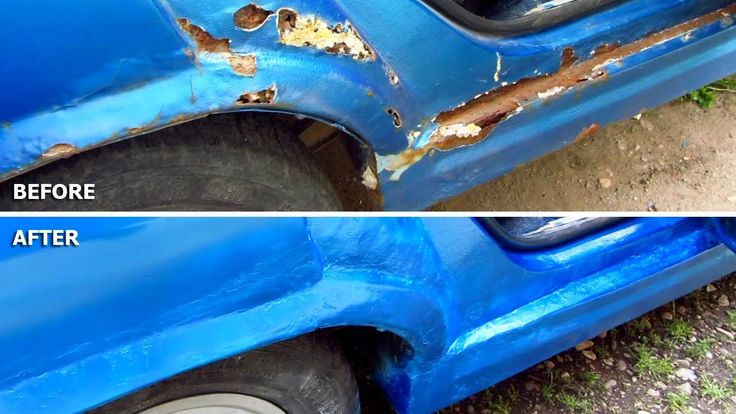
This method can be used to remove both acrylic and enamel paint.
Paint remover for plastic products may contain harmful ingredients that could affect the plastic surface. So, always read the label and make sure what you are buying is correct and follow the instructions for use. Even some of the household items can also cause damage to plastic surfaces. Nail polish remover, for instance, can melt plastic, so it is best not to use too much of it. Following are a few more tips, so you can remove paint from plastic carefully.
 Also, work in a well-ventilated space
Also, work in a well-ventilated space
If you are ever stuck with a situation where you have spilled paint on a plastic surface, you now know what paint stripper for paint method to use. You can also use any of our top recommended products to easily remove the spilled paint in a matter of minutes.
When using a paint stripper for plastic, you have to be careful what you use.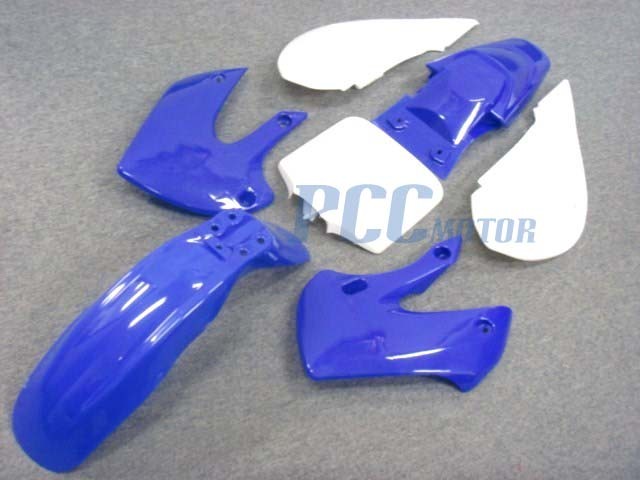 Harsher chemicals like paint thinners can melt the plastic. First, try using simple soap and water, then try some vegetable oil. If the paint is dry, you can also try scraping it off and if that does not work, try a little acetone or rubbing alcohol.
Harsher chemicals like paint thinners can melt the plastic. First, try using simple soap and water, then try some vegetable oil. If the paint is dry, you can also try scraping it off and if that does not work, try a little acetone or rubbing alcohol.
Spray paint can sometimes get onto surfaces even if you have tried your best not to mess. Depending on the type of paint, you can either use soap and water or if it is oil-based paint, some acetone, or denatured alcohol if it is latex paint.
The best method would be to get rid of the paint straight away. However, you can also lightly sand the surface to get rid of the paint. Do not overdo this method as you can leave marks, sanding will also dull the surface.
Thinners as a paint stripper for plastic may not be the best method. Thinners might not damage some harder plastics, but they will definitely harm softer plastics and dissolve Styrofoam. Trying something less harsh first would be a better idea.
Trying something less harsh first would be a better idea.
by Brad the Painter
You can damage many types of plastic with solvents like acetone, etc., so start with low-impact solvents and then move on to the harder stuff, like Bob Dylan.
First, a simple test if you are not sure what kind of paint it is, then we show how to remove paint from plastic: both latex and oil. You probably have what you need at home now.
The go-to product (something we should all have around the house) is Motsenbocker’s for latex paint and for oil paints (both shown). Mr. Motsenbocker, is there anything you can’t do? How to know what paint you have it key.
Latex will become gooey when exposed to certain solvents.* Acetone is the best way to tell if dried paint is latex (most nail polish removers have acetone), but rubbing alcohol will also dissolve latex, just more slowly. Video of me doing this test is at the very bottom.
Video of me doing this test is at the very bottom.
If latex, go to the post just about removing latex paint: you are the lucky ones.
1. Is it still wet? Keep it wet! Apply the paint’s known solvent right away if you can. Not sure about the solvent? Start with paint thinner (mineral spirits). Lighter fluid and gasoline will work too.
 Other solvents listed below.
Other solvents listed below.2. Has it dried up? Let’s start with what we have around the house, then we’ll look at some solvents and paint removers (and stock up for next time). That old paint remover is now illegal for good reason. Read the Washington Post about new law from the EPA, or you can it on the EPA’s website.
• Always do a test spot for each method to see if the solvent harms the plastic (or any surface) underneath.
 Keep it thick and wet to keep it working.
Keep it thick and wet to keep it working.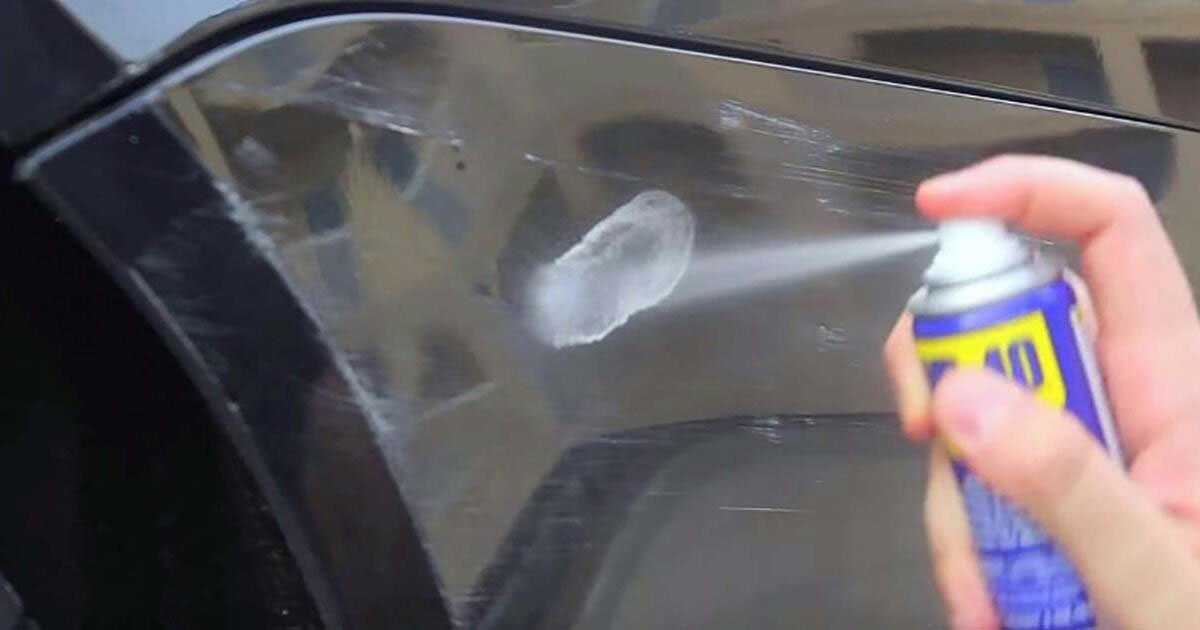 Warning: this can melt plastics.
Warning: this can melt plastics.We have listed scrapers and all the basic painting tools in one place.
SOLVENTS: Most of these are toxic so you will need to wash your hands well if you touch it. Don’t delay.
Before removing old paint, make sure it contains no lead. Did you hear that it causes irreversible damage to the brain, liver, and kidney? With this kit, you can take 5 samples, send them into the EPA approved lab and the cost of the lab is included in the purchase.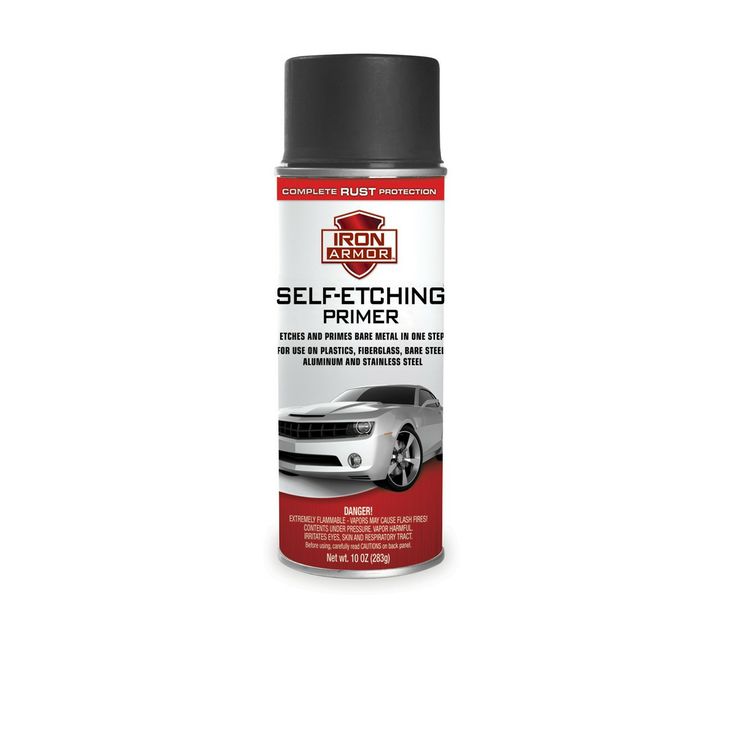 I’ve looked at other kits that have hidden fees.
I’ve looked at other kits that have hidden fees.
Removing lead paint? Wear the respirator on this page with the purple, circular filter: the 3M 2097, Organic Vapor Relief. Take that lead and transmute it into gold: pays for itself.
How to remove paint from plastic or from anything, if any lead paint is present: wear a good respirator mask: read about my respirator: it’s cheap insurance. Also…
Read from the EPA about what professionals are required in “abatement projects in pre-1978 target housing and child-occupied facilities to be certified and follow specific work practices.”
I ruined a collector’s item once because I guessed at how to remove paint from plastic: it turned a G.I. Joe bald. I hope this all helps.
3M respirator filters for using paint removerFinally, done? Wash skin over and over with lots of soap to get any chemicals off.
Did we forget something? Let us know in the comments if you have some concerns or insight as to how to remove paint from plastic or how to remove paint from anything of any kind.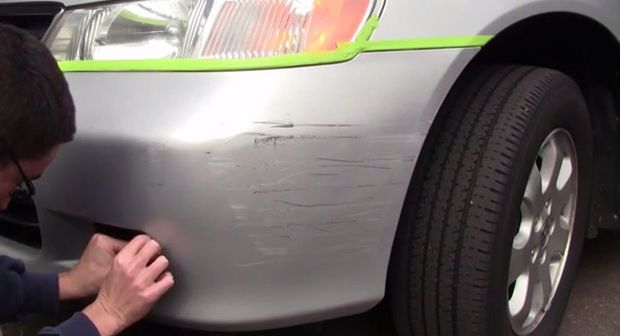 Thanks!
Thanks!
How to Touch-Up Paint In 4 Steps (mostly deals with walls, but gives some tips)
How to Remove Spray Paint (From All Kinds of Surfaces)
How to Get Spray Paint Off Skin (with Home Remedy)
How to Remove Latex Paint: Dry or Wet (Painter’s Rag Trick)
The first of 2 videos below show the tests we ran.
Categories Misc, Paint Clean Up 90,000 replacement of car wheel arches - AvtokapitanContent:
The complexity of replacing (installing) arch extensions depends on their design and material of manufacture. The easiest way to install universal rubber expanders, which is a reinforced tape of black rubber. It is more difficult to install plastic and fiberglass fenders. In any case, preparatory work is necessary before replacement.
The easiest way to install universal rubber expanders, which is a reinforced tape of black rubber. It is more difficult to install plastic and fiberglass fenders. In any case, preparatory work is necessary before replacement.
The easiest way to dismantle rubber fenders, which can simply be cut off, after which access to the screws screwed into the edge of the wheel arch is simplified. However, the car must be jacked up, and for some models, the removal of wheels with wide profile tires is also required.
Plastic expanders with recessed screws tend to have rusty fixings. The main danger of disassembly is the increase in screw holes, so self-tapping screws, screws must be unscrewed with gentle methods. It is also difficult to remove fiberglass, fiberglass fenders with fasteners on the inside. As a rule, they are cut to gain access to the attachment points.
Preparation work is necessary before replacing all types of fenders. Wet dirt accumulates under the expander. This leads to the fact that after dismantling, the initial manifestations of rust are often found on the wing.
Wet dirt accumulates under the expander. This leads to the fact that after dismantling, the initial manifestations of rust are often found on the wing.
Therefore, in preparation for replacement, the wheel arch is cleaned, washed, treated with a rust inhibitor. If rust has significantly affected the body metal, it must be puttied with an anti-corrosion compound and painted to prevent the spread of corrosion. In the most difficult cases, during the dismantling of the expander, corrosion is detected, which requires cutting out the damaged areas and welding the wing with repair inserts.
When preparing a wing, it is obligatory to try on a new part. If the mounting holes in the new flare do not match with the old ones, additional processing of the wing will be required. If you just cover the old holes with a new lining, they will become a source of rust. According to the correct technology, they need to be brewed, treated with anti-corrosion putty.
Most car enthusiasts prefer to install the same part when replacing. But we often meet with customers who want to install better quality fenders. For most car models, the only obstacle is the financial capabilities of the owner.
But we often meet with customers who want to install better quality fenders. For most car models, the only obstacle is the financial capabilities of the owner.
Fender flares manufactured by the American company Buschwacker are of high quality. The authority of the company is so high that in America, along with the term "fender", the name "bushwacker" is used. For the part, a special high-strength plastic Duraflex is used, plastic protections are available in a wide range of colors. Products of the German brand "Delta" have also proven themselves well.
But imported fender flares are designed for specific models of SUVs, crossovers and pickups (Volkswagen Amarok, Nissan Navara, Toyota Hilux, Toyota Tundra, Ford Ranger), they cannot be installed on Chevy Niva or Hunter. For Russian motorists, high prices will also be a disadvantage of imports. A set of Buschwacker or Delta fenders costs $1200-$1800. In addition, imported plastic is covered with a durable gelcoat on the outside, so there is no point in repainting it to match the base body color.
For budget foreign cars, domestic models, fiberglass arch extensions, which are produced by Russian manufacturers, are more suitable. Such overlays are distinguished by an affordable price, they can be painted in the base color of the car. But the quality of plastic is unequal, when choosing a manufacturer, be sure to consult with our craftsmen.
For lovers of exclusivity, we will make original fenders from fiberglass, fiberglass.
When replacing, as a rule, do not paint the universal rubber expanders, which the accessories industry produces in black, gray. Plastic, metal protections are painted in the color chosen by the customer or adjusted to the shade of the base car enamel. Painting technologies depend on the type of plastic from which the fender is made. When painting in the base color of the body, the part is painted after mounting on the wheel arch. In other colors, the lining is painted before installation.
Standard ABC, Vinyl, PE guards are sold primed 'paintable' or painted black, grey. If you do not want to match the color of the painted lining to the main shade of the body, it can be installed on the arches without painting.
If you do not want to match the color of the painted lining to the main shade of the body, it can be installed on the arches without painting.
For primed fenders, the master first determines the quality of the primer. It is impossible to paint protection on fragile transport soil. It is necessary to wash off the transport primer, apply a strong primer. To increase adhesion when priming plastic, special primers or liquid polyester putties are used. Although the fender is painted according to the usual technological cycle, a qualified painter is required:
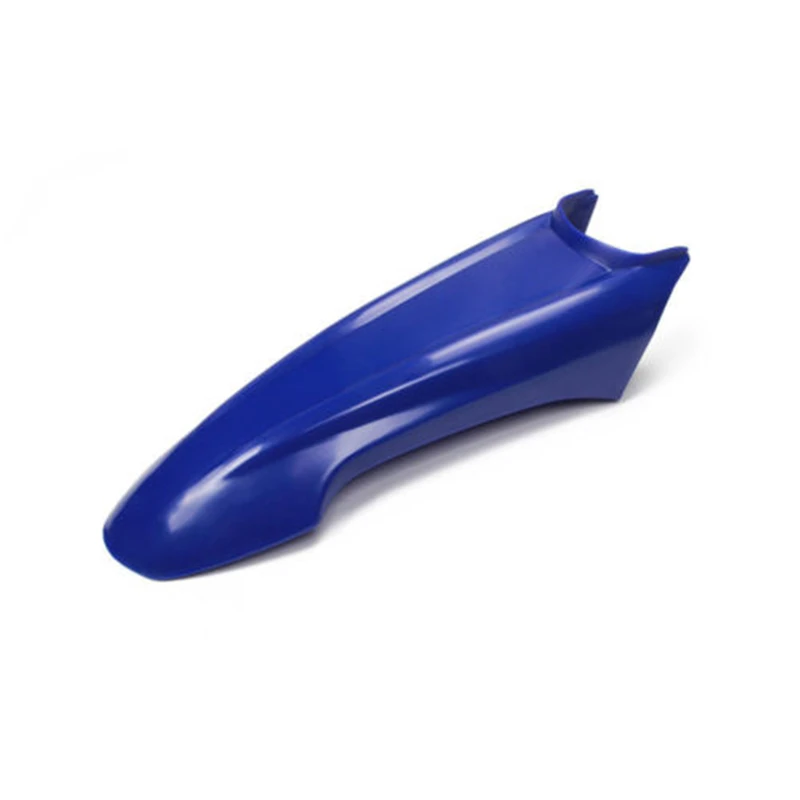
For the inner surfaces of the fender these operations are not necessary.
Fiberglass fenders are not only made by large car accessory manufacturers who mold parts on modern industrial equipment. By purchasing a handicraft product, you will add trouble even to experienced masters of our paint shop. For low-quality expanders, air bubbles are characteristic, which are formed with incorrect proportions of polyester resins, molding violations. Our painters regularly encounter poor quality fiberglass. To perfectly paint such an expander, additional operations will be required:
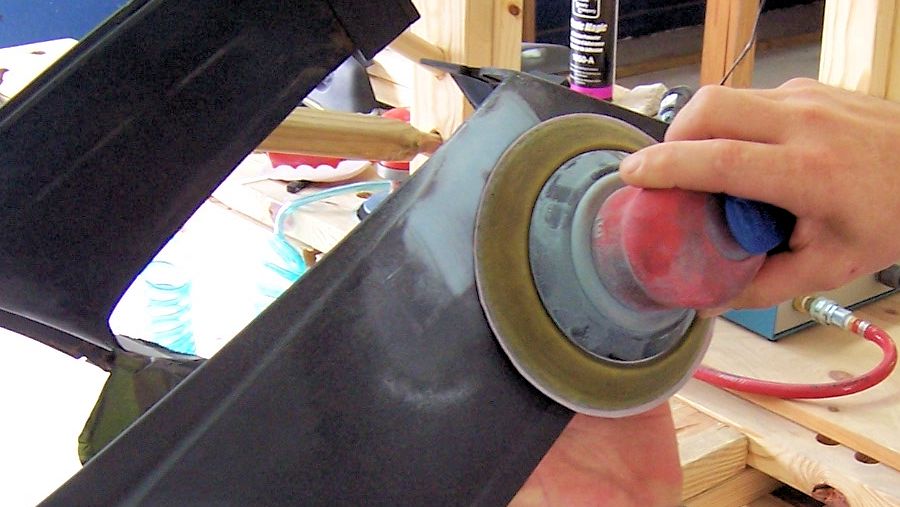 They can only be removed by spraying liquid putty, which is polished after complete drying.
They can only be removed by spraying liquid putty, which is polished after complete drying. Further painting operations are carried out according to the standard technological cycle. For painting in the base color of the protection already installed on the wheel arch, painting is applied "transition".
Self-tapping screws, screw connections, double-sided adhesive tape, special assembly glue are used to fasten the extension to the wheel arch. Our masters always install protection according to the technology recommended by the manufacturer. But in the interests of the customer, we can strengthen the adhesive or adhesive fastening with additional metal inserts and self-tapping screws.
 Special attention was required for the windshield opening - a lot of through rust - they welded metal by welding and turned angle grinder shapes + at the junction of the inner and outer rear fenders, in the places of failure, they welded a wire for further building up with fiberglass and leveling the planes.
Special attention was required for the windshield opening - a lot of through rust - they welded metal by welding and turned angle grinder shapes + at the junction of the inner and outer rear fenders, in the places of failure, they welded a wire for further building up with fiberglass and leveling the planes. After complete treatment with primers - thorough drying and final preparation of parts for painting, degreasing and gluing. Full body painting with interior and openings, engine compartment + a lot of small things + inner panel required a lot of effort and materials.
Additional required parts of the car were treated with an anti-gravel compound (trunk, sills, bottom, engine compartment)
The car was soundproofed with vibroplast 5 + roof with a special self-adhesive material.
Full anti-corrosion treatment Gas 21, all internal cavities of the car body (spars, engine compartment, hood, trunk, sills, wheel arches, each seat under all rubber bands, each lining and chrome detail in the place of contact with the body).
A lot of hassle with assembling and fitting parts with fasteners - they required drilling additional holes for multiple fittings.
To make my dream come true, I wanted to find a car in factory paint (not rusty) with one owner, and preferably with chrome "US"
But the years take their toll, for various reasons it is almost impossible to find an excellent Volga ...
preparation for sandblasting.
After sandblasting, priming, painting, anticorrosive bottom.
In the photo where the bottom began to be painted black, there are new bridges.
Assembly, painting of chassis.
Engine. Repair, boring under 1 p, balancing, replacing the camshaft bushing, Piston for special purposes (PON) ...
Preparation, painting in the chamber.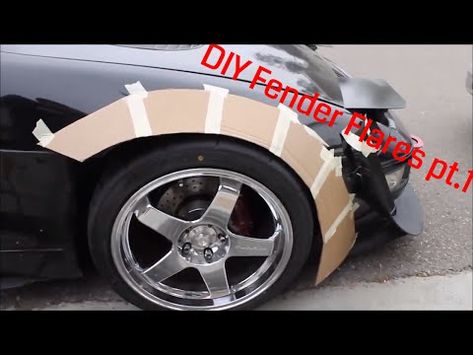
Chrome assembly. Glass will be installed after the ceiling reupholstery.
Salon: Italian leather, with perforated inserts.
and indeed, if the collar is fastened, then there are other ways.
Live and learn.
For one coffee I humiliate mercilessly. Collective farm freaks.
in the hands of a grinder. there are disks to cut a bunch of rubbish and make a holder .. then cut your workpieces with disks. .. not?
Yes, they constantly post here how to spend time and money and pull off garbage from shit and sticks, which costs 3 kopecks
Yes, they constantly post here how to spend time and money and pull off garbage from shit and sticks that costs 3 kopecks
Worse! One hundred times! TRAITOR.
Worse! One hundred times! TRAITOR.
An entertaining, humorous RuNet portal! Every day we publish the funniest collections of photos, jokes, memes and of course girls! All humor and other posts are not offensive in nature, but are published with the aim of raising the mood and self-development! Poor is the comedian who cannot laugh at himself.
Content of the 18+ site that does not violate the laws of the Russian Federation. All materials are taken from open sources and social networks, belong to their authors.
Thank you in advance, Your New 21st ally on Belarusian soil.
My 21V also stood for seven years (1 owner is our family, I am in the third generation, but my grandfather has not been driving lately and “did not let anyone in the car”. Started up the first time, went to Moscow. That was 4 years ago. )
>3. How to remove paint stains from chrome without harming the chrome?
in general, if the paint is synthetic, then you can try with white spirit or others. But in any case, it’s better to find an unnecessary piece of chrome and test it on it.
>4. It is necessary to change the thresholds, weld the bottom. But at the moment there is a layer of old coating and dried mud on it and on the inside of the wings. what is the best way to clean it and in what sequence to do it all.
It is necessary to wash, then we will see!
>5. The clutch pedal is hard to press and does not return back, what is the reason?
The clutch pedal is hard to press and does not return back, what is the reason?
I recently flirted - this is a working clutch. Moreover, one should not particularly rejoice at interchangeability with UAZ - now it is already the fifth in 2 years. And again he hooks, you bastard. It makes sense to look for a QUALITY cylinder. In a good store. We don't have that in Tula. Probably have to put a reinforced piston with a double cuff. There may be a problem with the master cylinder. Or the release bushing is rusty. But I know from experience that a worker, especially one changed from an UAZ, does not survive the winter (in the garage). And in general - Mr. but.
>6. The brake pedal is pressed very hard, but the car slows down (checked when pushing the car) how to fix it?
Brakes 21st is the talk of the town. And the pedal is so tight that you have to squeeze into the back of the sofa :))) Well, at least it slows down after such a parking lot. Although mine slowed down.
> Thank you in advance, Your New 21st ally on Belarusian soil.
kilometers is not a hindrance.
If you are real sheep, write. There are few of us, but we are in vests.
Well, in general, good luck, as the play progresses, you will understand everything yourself
Vasily
: I am starting to restore my gas-21r.
: I would appreciate your help with a kind word.
: brief background.
: 5 years ago the car was found. Due to circumstances, she was driven into the garage and there she stood quietly peacefully all this time.
: Now questions.
: 1. Is it possible to immediately try to start the engine without fear of jamming it, (at the moment the candles are unscrewed, I don’t know who did it and why), if it’s impossible to start, then what procedures need to be done?
: 2. The car was painted with a brush. I will paint again at the service station. How to remove paint, where to start preparing.
: 3. How to remove paint spots from chrome without harming chrome?
: 4. It is necessary to change the thresholds, weld the bottom. But at the moment there is a layer of old coating and dried mud on it and on the inside of the wings. what is the best way to clean it and in what sequence to do it all.
But at the moment there is a layer of old coating and dried mud on it and on the inside of the wings. what is the best way to clean it and in what sequence to do it all.
: 5. The clutch pedal is hard to press and does not return back, what is the reason?
: 6. The brake pedal is pressed very hard, but the car slows down (checked when pushing the car) how to fix it?
: 7. And in general, now everything is in the garage in this state. WHERE TO START WORK and how to pre-prepare the machine in order to drive it to the master for welding (I would like to do part of the preparation myself to make it cheaper).
: 8. I still have a lot of questions, but I would like to hear your advice on at least these.
:
: Thanks in advance, Your New 21st ally on Belarusian soil.
:
:
Try to remove the fenders yourself and see the condition of the body even better. Yes, and you will understand the state of the wings themselves, it’s worth washing them or it’s time for them to go somewhere else. (Both of my rear wings had small external flaws, and in the place of attachment to the body it turned out that it was more difficult to restore them than to replace them.
(Both of my rear wings had small external flaws, and in the place of attachment to the body it turned out that it was more difficult to restore them than to replace them.
+++ when I look at the pit, I can see surface rust under a layer of dirt on the rear fenders, I'll take it off and then I'll find out more.
VERY CAREFULLY treat small rubber bands and spacers (such as under the emblems, door handles) it is very difficult to get them, and the welder Uncle Vasya will not stand on ceremony. and then you will be cut out of bicycle chambers.
+++ OK, I'll be careful! heard a lot.
and along the way another question, rubber bands with traces of paint (painted inaccurately) can somehow be restored (cleaned) without harm to the rubber bands.
:
: Well, in general, good luck, as the play progresses, you will understand everything yourself.
: : I would appreciate your help with a kind word.
: : brief history.
: : 5 years ago the car was found. Due to circumstances, she was driven into the garage and there she stood quietly peacefully all this time.
Due to circumstances, she was driven into the garage and there she stood quietly peacefully all this time.
: : Questions now.
: : 1. Is it possible to immediately try to start the engine without fear of jamming it, (at the moment the candles are unscrewed, I don’t know who did it and why), if it’s impossible to start, then what procedures need to be done?
: : 2. The car was painted with a brush. I will paint again at the service station. How to remove paint, where to start preparing.
: : 3. How to remove paint spots from chrome without harming chrome?
: : 4. It is necessary to change the thresholds, weld the bottom. But at the moment there is a layer of old coating and dried mud on it and on the inside of the wings. what is the best way to clean it and in what sequence to do it all.
: : 5. The clutch pedal is hard to press and does not return back, what is the reason?
: : 6. The brake pedal is pressed very hard, but the car slows down (checked when pushing the car) how to fix it?
: : 7.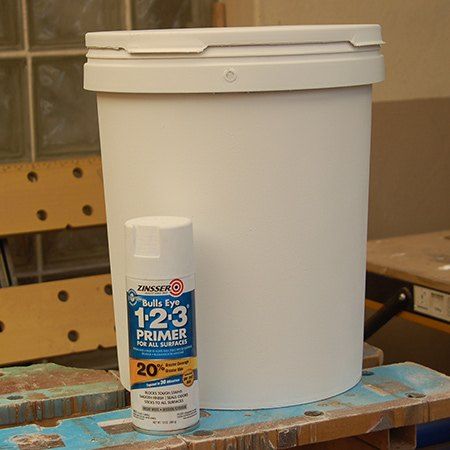 And in general, now everything is in the garage in this condition. WHERE TO START WORK and how to pre-prepare the machine in order to drive it to the master for welding (I would like to do part of the preparation myself to make it cheaper).
And in general, now everything is in the garage in this condition. WHERE TO START WORK and how to pre-prepare the machine in order to drive it to the master for welding (I would like to do part of the preparation myself to make it cheaper).
: : 8. I have many more questions, but I would like to hear your advice on at least these.
: :
: : Thank you in advance, Your New 21st ally on Belarusian soil.
: :
: :
:
Homemade cars, tractors, ATVs and ATVs
Hello everyone! I want to tell a story about the restoration of my GAZ-21 Volga, I think my story will be useful to someone.
It all started from early childhood. I don’t know why, but as far as I can remember, I really liked the 21st Volga, and very much. Although no one in my family has ever had one.
Life went on as usual, I had not seen these cars on the roads for a long time, and nothing foreshadowed drastic changes, when suddenly, in the late autumn of 2014, one 21st Volga accidentally came across on a car sales website.
I remembered an old dream. I thought about it, looked at the photos of other options. And a couple of days later I went to see the car.
I just wanted to look, come to a conclusion like: “Well, what the hell do I need it for” and calm down. Up close, the condition was very far from the photos. Who bought not new cars, he knows how sometimes it happens.
The car was originally blue, and then for some reason they doused it without disassembling it only from the outside, with blue paint, which began to peel off in places, and the putty fell off in places in pieces.
It looked terrible, and the interior was also very tired. But as it was all original which is very pleasing.
As soon as I got behind the wheel, and how I liked her original condition. Whoever sat behind the wheel of the original 21st Volga knows this feeling, as if you find yourself in another era.
I thought for a long time and decided that someday you need to make your dreams come true. The next day after a night of reflection went to pick up.
The next day after a night of reflection went to pick up.
Initially, the plan was very "naive": rent a warm garage for the winter, and during the winter on cold evenings bring this legendary car to the ideal, and prepare the car as much as possible for convenient operation.
Soon the realization came that it was not possible to restore the car to the desired level in half a year in his spare time, as a result, the restoration dragged on for almost 5 years. Worked in free evenings and on weekends.
The car was dismantled step by step “down to the screw”.
After the native engine did not want to live long, the idea to put the Soviet V8 ZMZ 511 under the hood stuck in my head, but with the ability to return the native motor to its place if desired.
By the way, a similar engine was installed on cars for the KGB, and the GAZ 23 model was called (for those who are not in the know).
I found a disassembled engine with documents and decided to assemble it as perfectly as possible on new components, with the weight distribution of everything. There were many difficulties with him, but in general the result was interesting. It's much more fun to ride with it. And what a sound :)
There were many difficulties with him, but in general the result was interesting. It's much more fun to ride with it. And what a sound :)
At the same time, the brakes, steering, rear axle, and little things like: athermal tinting, installing a JBL speaker in the native radio case, etc. were finalized.
All improvements were made exclusively without violating the original appearance and atmosphere of the car of those years.
I did almost all the work on the car myself, except that it is better to trust the professionals, namely: stitching the interior (I pulled it myself), painting (I did almost all the preparation myself), and assembling a new engine. Eyes are afraid, but something needs to be done.
I tried to buy new spare parts, as far as possible, such as: plastic, rubber bands, glass, etc. , Nice.
In general, this car can be endlessly refined and brought to the ideal. But my goal was not to collect a “museum exhibit” (all museums have had them for a long time), but a car for driving on public roads. Therefore, I see no reason to bring some details to the ideal.
Therefore, I see no reason to bring some details to the ideal.
Do not be afraid to start and do something if you want something! Good luck to all!
Restorating work: Cyril Smokotin. Tomsk.
Good afternoon, the topic of today's article is the restoration of the gas steering wheel 21 with your own hands.
For the owners of Gaz 21 and autoretro fans, it is known that plastic in those years was rather imperfect and capricious.
In fact, the plastic of those years is a mixture of bone meal with epoxy - obviously, these are not modern polymers that decompose for 300 years! Under the action of microbes, the sun and atmospheric moisture, the gas steering wheel 21 cracks, blistered, changes color.
As a result, it will look something like this:
Cracks that you can cut yourself on, swelling and discoloration that are unpleasant to the touch!
— we wash large dirt from the steering wheel with a silicone remover.
- degrease large cracks with a silicone remover and fill them with epoxy from the bumper repair kit:
If the steering wheel is in very poor condition, we form the base of epoxy mixed with fiberglass, but in this example there is no such damage.
With a high degree of probability, it will not work to remove all the cracks at once. It's okay if it doesn't work to remove all the cracks at once, it is permissible to repeat the procedure several times.
I caution you not to use factory or home epoxy. goods, as it dries for a long time and each time with a dubious result ... ..
- degrease small cracks and shells with a brush and a silicone remover.
- with the same brush we spill small cracks and shells with epoxy. but we slightly dilute the epoxy with 646 solvent, otherwise the resin will not get inside, and will remain on the surface as a drop.
- dry the epoxy until completely dry and mat the steering wheel with sandpaper number 80
— degrease the steering wheel with a silicone remover.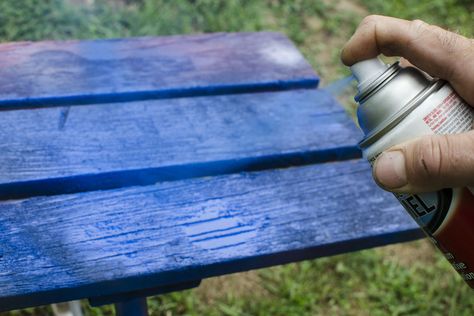
— apply epoxy with a brush on the entire surface of the steering wheel, this is necessary to reliably isolate the remains of the steering wheel from air and atmospheric moisture (so it will last longer) with the help of a universal putty, small irregularities, not forgetting to degrease before applying the putty.
- use sandpaper with number 180-360 to grind the putty and bring the steering wheel to a “fine shape”.
- degrease and primer. It can be primed with both a spray gun and a brush. This particular steering wheel was primed with a brush.
- we wait for the soil to dry and we mat the soil sequentially with sandpaper with numbers 360-500
- we paint with a spray gun or airbrush. Buying ivory paint is quite problematic, more or less the color will be a mixture of paints 040 and 235 (but the ratio is “by eye”)
- dry and enjoy the result:
The result of the restoration is the steering wheel installed on the car, but not yet assembled and glued:
That's it for today.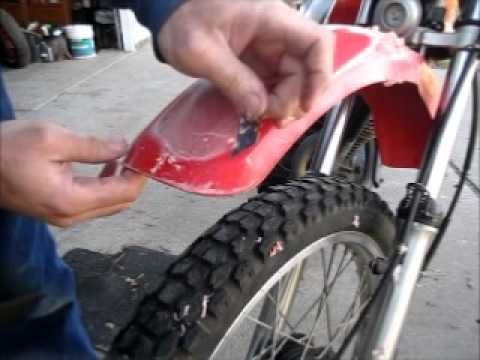 Good luck in the restoration of the rudders gas 21.
Good luck in the restoration of the rudders gas 21.
As you know, most of the homemade is born as a vital necessity. So lived our grandfathers, our fathers, well, we got it! But nowhere are there so many Kulibins as here in Russia! It's simple: why spend money on something that you can do it yourself ? In addition, from free material, which is always at hand!
Here, too, in the process of restoration of my retro car Gaz-21 Volga I had to do a lot from scratch, with my own hands . The reason is simple: the cost of spare parts for such cars is quite high, and is constantly growing; for some positions - simply astronomically ...
And some of the details are simply impossible to find on sale ... There is only one way out - homemade! Of course, we must pay tribute to the fact that my car was still taken care of, and I got it in relatively good condition, but still . ..
..
The body and interior of my car suffered the most from time to time. The bolts on the interior door handles were so rusty that they had to be cut down. The pens themselves (like many other things) required a radical restoration. Having admired the prices for a new-made (at the same time, incomplete!) set, I decided to do everything myself. The handles removed from the doors were in this condition…
Having disassembled them, I opened the picture even “more pleasantly”:
But at what time it turned the steel base under the rubber cushion covered with leatherette:
In general, there was something to work with. First of all, you need to put the metal in order.
The steel bases of the handles were carefully sanded to a shine (if this is not done, the remaining rust particles will cause corrosion under the paint), and washed with white spirit, then treated with an anti-corrosion compound (costs a penny, sold in any hardware store), which turns residual rust into priming.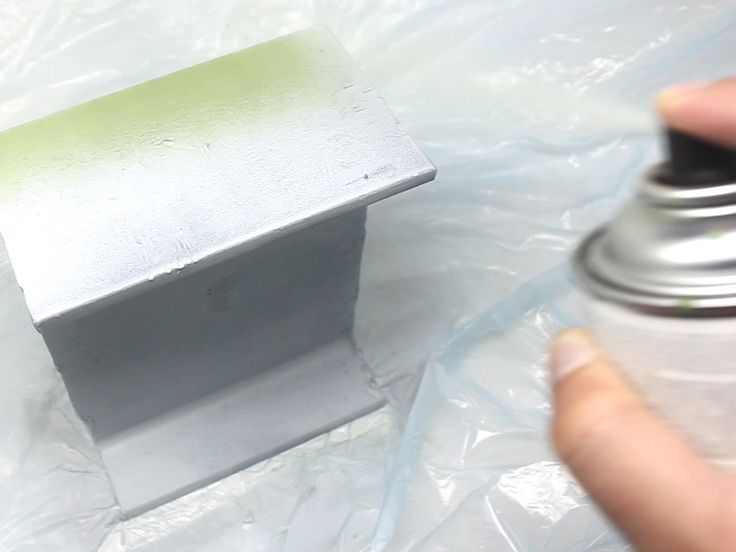
Now you need to protect the metal. For this, the remnants of Hammerite paint came up, which contains an inhibitor (can be painted without primer, directly on rust), penetrates deep into the micropores of the metal and tightly closes oxygen access to it, preventing corrosion.
While the paint was drying, the plastic parts of the handles were thoroughly washed. The focal points of damage had to be putty with epoxy, removed with a fine sandpaper.
After these procedures, I painted the plastic parts of the handles with ivory acrylic paint, covering the top with acrylic varnish.
The metal and plastic parts of the handles are ready, it remains to restore the upper parts - the cushions, and the leather-covered handles.
Washing the rubber pads, I noticed that they actually hardly suffered from time, and require only a bath and protection. Therefore, after a thorough washing and drying, I simply generously smeared them with shoe silicone. But with leatherette it was more difficult: time turned it into a cracker, which simply broke in the hands; it just needed to be changed. So, you need to make new skins “in the image and likeness” of the factory ones, and somehow remove the pattern from these “crackers” ... For this purpose, I soaked the old tight handle in water, and when it became soft, I straightened it into a flat sheet and dried it. So it turned out to be a pattern from which you can make patterns.
So, you need to make new skins “in the image and likeness” of the factory ones, and somehow remove the pattern from these “crackers” ... For this purpose, I soaked the old tight handle in water, and when it became soft, I straightened it into a flat sheet and dried it. So it turned out to be a pattern from which you can make patterns.
We transfer it to a piece of leatherette, circle it, cut it out. Initially, the color of the leatherette on my handles was black, but since I had to change it, I decided to keep everything in the color of the car itself. The casing consists of two parts: the top, the visible part, and the end strip - the side part, which faces the door casing. Sew the end tape to the top. It is better to do this on a sewing machine - it will turn out quickly, and very smoothly: “like from the factory”!
Now we assemble the handles. We lay rubber pads on metal bases, put ready-made skins on them. We tuck the edges, cut off the excess, glue the lower edges to the steel base, and for better fixation, we tighten the opposite edges of the handle skin with a needle and thread. This seam goes inside the plastic part of the handle and will be invisible. The upper part of the handle is obtained in a case.
This seam goes inside the plastic part of the handle and will be invisible. The upper part of the handle is obtained in a case.
And the final moment - we connect the upper and lower plastic parts of the handles.
The door handles have been restored , and will soon fall into place in my favorite retro car Gas-21 Volga !
Antiqcar offers restoration services for the GAZ-21 car. This model has become antique and many vintage car restoration companies do restoration work on it.
Among these companies, it is ours that has proven itself best of all due to the following advantages:
We offer three options for restoring the GAZ-21:
 We are doing everything to make the car take first place at the event.
We are doing everything to make the car take first place at the event. Antiqcar can carry out additional modifications to the vehicle. In particular, we can convert the engine to AI-92 gasoline. Thanks to this, you can save on fuel, and the power of the machine will increase to 90 hp. We can install the following devices:
At your request, we can modify the original car receiver, adding modern multimedia capabilities to it. Its appearance will be preserved.
We restore everything that needs to be restored and replace the rest with original or identical parts. The car is disassembled, employees determine which elements are present, and make a list of them. Then this list is compared with reference books and it is established what is missing.
The car is disassembled, employees determine which elements are present, and make a list of them. Then this list is compared with reference books and it is established what is missing.
Great attention is paid to all technical components of the machine. Our employees carry out their full repair and testing. The engine and gearbox are overhauled, after which their performance is also checked. Electrical wiring is repaired, worn parts are replaced. At the same time, we use wires with the original color and cross section. Thanks to this, the authenticity of all components of the machine is preserved.
The body of the GAZ-21 is being completely restored. Our employees have extensive experience in welding body elements. They have at their disposal modern equipment and consumables from European suppliers.
A full range of works is being carried out to restore the appearance and interior of the car. Both modern and authentic materials can be used for painting. Anti-corrosion compounds are used that protect cars from corrosion for 10 years. In the cabin, worn parts are completely replaced, sheathing and additional equipment with missing elements is carried out.
Anti-corrosion compounds are used that protect cars from corrosion for 10 years. In the cabin, worn parts are completely replaced, sheathing and additional equipment with missing elements is carried out.
After the completion of the restoration work, we run the GAZ-21, testing all the technical components of the car and analyzing their work. Any problems noticed at this stage are immediately corrected. For running in, special roads are used.
Turning to us, you can completely restore the car, which is considered a classic of the domestic auto industry. Restoration will allow you to use the car both for personal use and for exhibitions and museums. Work takes up to 10 months. To get advice, call the numbers listed on the site.
Antiqcar offers restoration services for the GAZ-21 car. This model has become antique and many vintage car restoration companies do restoration work on it.
Among these companies, it is our company that has proven itself best due to the following advantages:

We offer three options for restoring the GAZ-21:
Antiqcar can carry out additional modifications to the vehicle. In particular, we can convert the engine to AI-92 gasoline. Thanks to this, you can save on fuel, and the power of the machine will increase to 90 hp. We can install the following appliances:
At your request, we can modify the original car receiver, adding modern multimedia capabilities to it. Its appearance will be preserved.
Its appearance will be preserved.
We restore everything that needs to be restored and replace the rest with original or identical parts. The car is disassembled, employees determine which elements are present, and make a list of them. Then this list is compared with reference books and it is established what is missing.
Great attention is paid to all technical components of the machine. Our employees carry out their full repair and testing. The engine and gearbox are overhauled, after which their performance is also checked. Electrical wiring is repaired, worn parts are replaced. At the same time, we use wires with the original color and cross section. Thanks to this, the authenticity of all components of the machine is preserved.
The body of the GAZ-21 is being completely restored. Our employees have extensive experience in welding body elements. They have at their disposal modern equipment and consumables from European suppliers.
A full range of works is being carried out to restore the appearance and interior of the car. Both modern and authentic materials can be used for painting. Anti-corrosion compounds are used that protect cars from corrosion for 10 years. In the cabin, worn parts are completely replaced, sheathing and additional equipment with missing elements is carried out.
After the completion of the restoration work, we run the GAZ-21, testing all the technical components of the car and analyzing their work. Any problems noticed at this stage are immediately corrected. For running in, special roads are used.
Turning to us, you can completely restore the car, which is considered a classic of the domestic auto industry. Restoration will allow you to use the car both for personal use and for exhibitions and museums. Work takes up to 10 months. To get advice, call the numbers listed on the site.
As you know, most of the homemade products is born as a vital necessity. So lived our grandfathers, our fathers, well, we got it! But nowhere are there so many Kulibins as here in Russia! Still, it's simple: why spend money on something that you can do yourself ? In addition, from free material, which is always at hand!
So lived our grandfathers, our fathers, well, we got it! But nowhere are there so many Kulibins as here in Russia! Still, it's simple: why spend money on something that you can do yourself ? In addition, from free material, which is always at hand!
Here, too, in the process of restoration of my retro car Gaz-21 Volga I had to do a lot from scratch, with my own hands . The reason is simple: the cost of spare parts for such cars is quite high, and is constantly growing; to some positions - just astronomically ...
And some parts are already simply impossible to find on sale ... There is only one way out - homemade! Of course, we must pay tribute to the fact that my car was still taken care of, and I got it in relatively good condition, but still ...
The body and interior of my car suffered most of all from time to time. The bolts on the interior door handles were so rusty that they had to be cut down. The pens themselves (like many other things) required a radical restoration. Having admired the prices for a new-made (at the same time, incomplete!) set, I decided to do everything myself. This is the state in which the handles removed from the doors were ...
The pens themselves (like many other things) required a radical restoration. Having admired the prices for a new-made (at the same time, incomplete!) set, I decided to do everything myself. This is the state in which the handles removed from the doors were ...
Having dismantled them, he opened the picture even “more pleasantly”:
But at what time he turned the steel base under the rubber cushion covered with leatherette:
In general, there was something to work with. First of all, you need to put the metal in order.
The steel bases of the handles were carefully sanded to a shine (if this is not done, the remaining rust particles will cause corrosion under the paint), and washed with white spirit, then treated with an anti-corrosion compound (costs a penny, sold in any hardware store), which turns residual rust into priming.
Now you need to protect the metal. For this, the remnants of Hammerite paint came up, which contains an inhibitor (can be painted without primer, directly on rust), penetrates deep into the micropores of the metal and tightly closes oxygen access to it, preventing corrosion.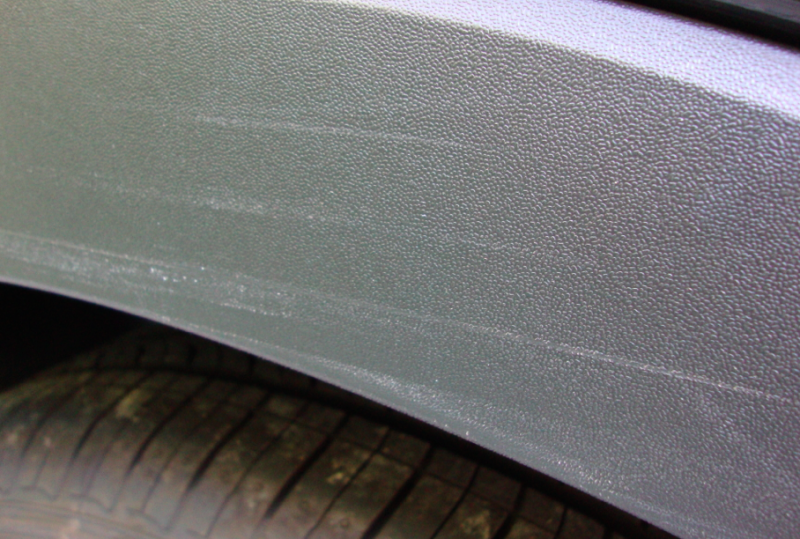
While the paint was drying, the plastic parts of the handles were thoroughly washed. The focal points of damage had to be putty with epoxy, removed with a fine sandpaper.
After these procedures, I painted the plastic parts of the handles with ivory acrylic paint, covering the top with acrylic varnish.
The metal and plastic parts of the handles are ready, it remains to restore the upper parts - the cushions, and the leather-covered handles.
Washing the rubber pads, I noticed that they actually hardly suffered from time, and require only a bath and protection. Therefore, after a thorough washing and drying, I simply generously smeared them with shoe silicone. But with leatherette it was more difficult: time turned it into a cracker, which simply broke in the hands; it just needed to be changed. So, you need to make new skins “in the image and likeness” of the factory ones, and somehow remove the pattern from these “crackers” ... For this purpose, I soaked the old tight handle in water, and when it became soft, I straightened it into a flat sheet and dried it.